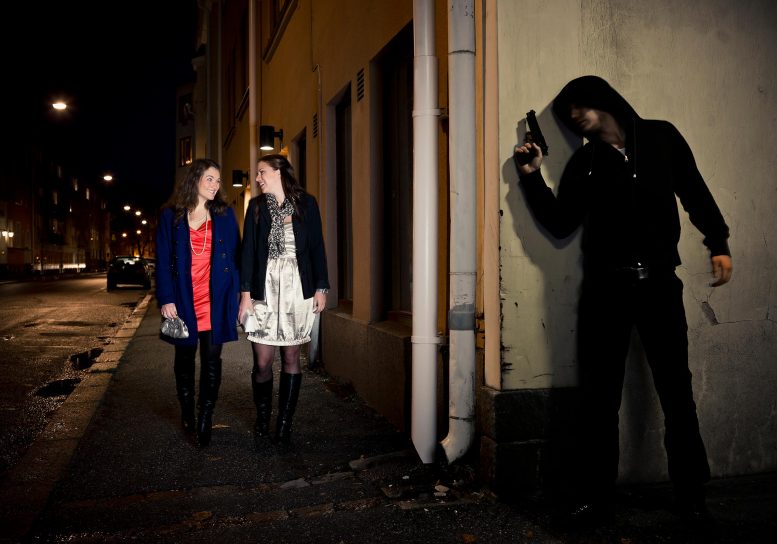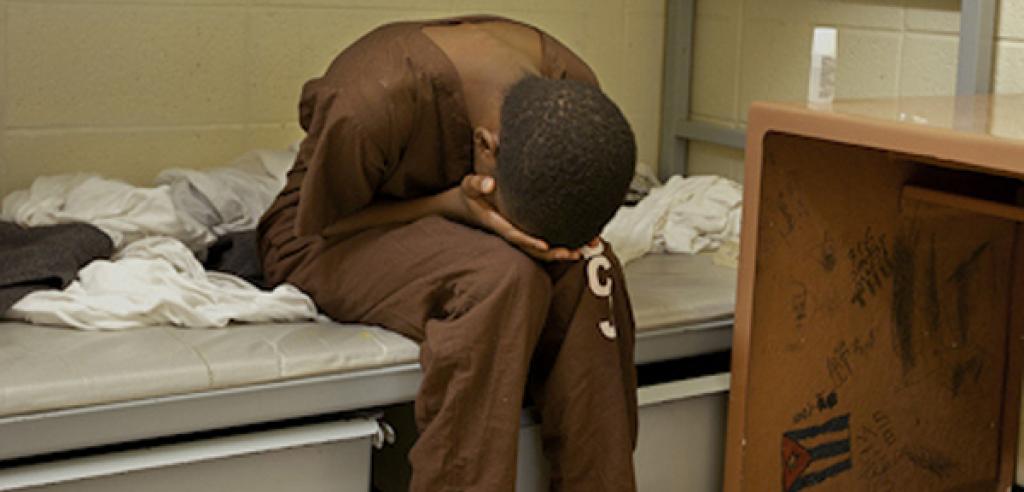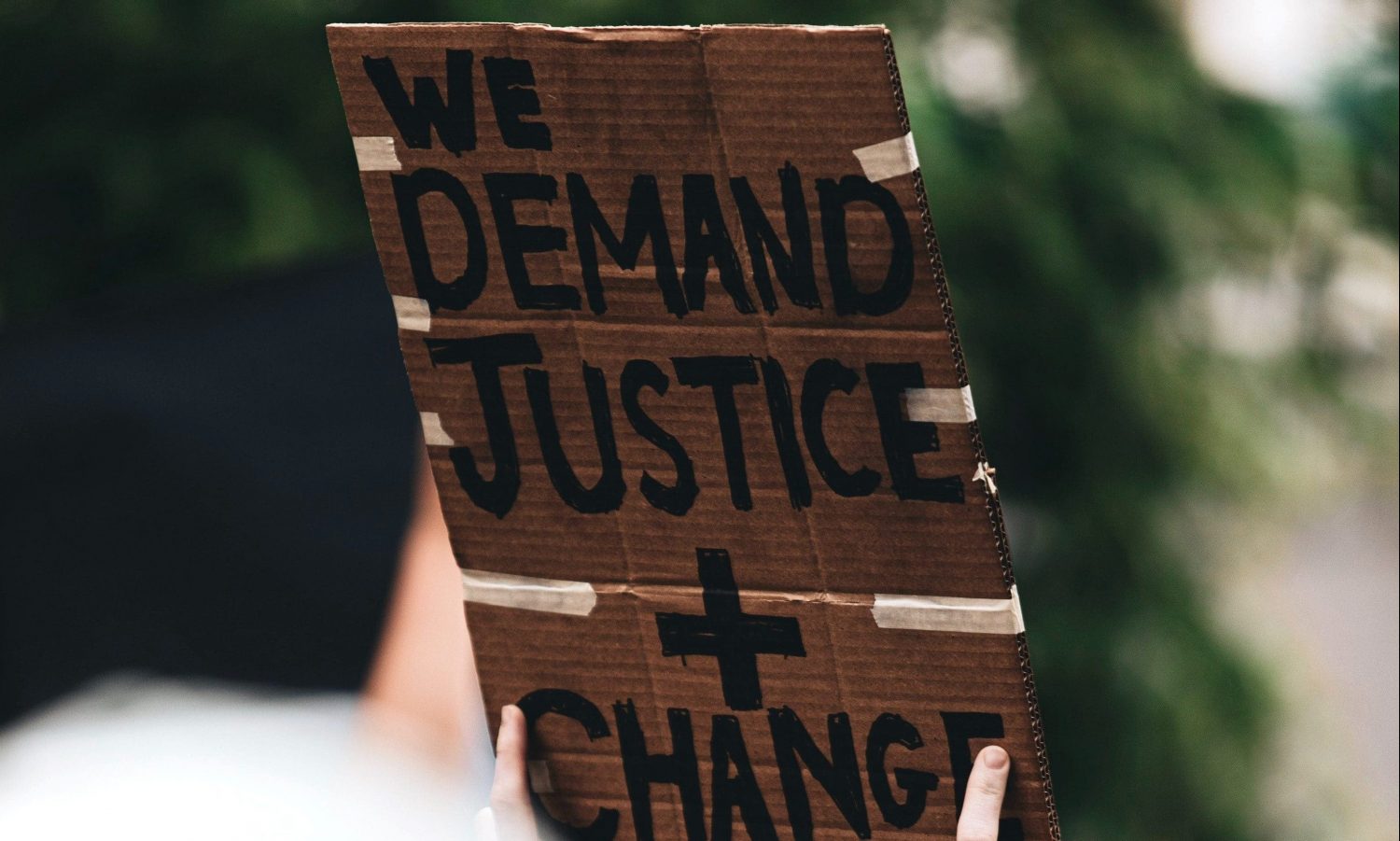According to the Pew survey, 81% of blacks, the majority of whom vote Democrat, saw violent crime as an issue which needs to be immediately addressed while 65% of Hispanics, who also tend to vote Democrat, also saw violent crime as a serious issue. Among whites, 56% also agreed. It's worth noting that just 33% of white Democrats agree with their fellow Hispanic and black Democrats.
On a related note, according to the most recent statistics regarding "hate crime" compiled by the FBI, since 2021 indicated that were 7,074 incidents of a hate crime reported. Of those, the majority---64.8%---were based on race or ethnicity. 15.6% were due to sexual orientation, and 13.3% were the result of the victim's religion. 3.6% were based on gender identity, 1.7% on disability, and 1% was solely on gender.
The report also indicted that 66.7% of the attacks were against individuals while 30% was on property and 3.3% of the attacks were generic. Just over 32% of the attacks were in or near the victim's home or place of work. 16.9% took place on a road, highway, street, sidewalk or alley. 8.1% happened at a school or on a college campus.
7% occurred in a parking lot or garage while 2.8% of the reported hate crimes were at restaurant or diner. 2.7% took place in a park or public outdoor setting. Finally, 26.1% of the reported hate crimes happened at multiple locations.When we look at the offenders, the FBI reported that 56.1% were white. 21.3% were black and 13.5% were unknown. When it came to the ethnicity of the offender rather than race, 7.6% were Hispanic or Latino. 8.9% were of multiple ethnicities, while the largest segment---28.1%---were simply unknown. Lastly 82.3% of the offenders were 18 years of age or older.
Using data from the 2021 FBI Uniform Crime Report, the Feds pointed out that while blacks make up just 13% of the U.S. population, they make up 33% of those arrested for non-fatal crimes which include robbery, aggravated assault, rape, and robbery. For more serious non-fatal violent crimes in which violence was used, they made up 36% of those arrested.
Hispanics comprise 18% of the U.S. population and yet are 21% of those arrested for serious non-fatal violent crimes. Whites make of 60% of the overall population and represent 46% of those arrested for non-fatal violent crimes and 39% of the more serious non-fatal violent crimes. They also are perpetrators of 52% of the violent crimes. Victims were able to identify the race of their assailant in 85% of the cases.
When it came to multiple assailants, the average number of attackers were two, in which 43% of the assailants were black, 38% were white, and 16% were Hispanic. When there was a single attacker, 59% were white compared to 22% who were black and 14% who were Hispanic. As for Asians, they consistently had the lowest percentages of any group with an average of about 5% of crimes committed, which is in proportion to their 5.7% of the U.S. population.
As most of you already know, the United States has the dubious honor of having the highest percentage of individuals behind bars of any industrialized nation with an average of 505 individuals per 100,000. However, among countries in general, the U.S. is sixth.El Salvador is ranked first with 605 individuals per 100,000 behind bars. This followed by Rwanda with 580 per 100,000, Turkmenistan with 576, American Samoa with 538, and Cuba with 510. After the U.S., we have Panama's 478 per 100,000. By comparison, Turkey's infamous prison system has 374 while Russia has "only" 304 and Costa Rica, with 301, is among the lowest in the world.
When we examine the latest available information (2021) regarding the prison composition of U.S. prisons, the Prison Policy Initiative reports that the largest racial segment behind bars are blacks. As stated above, blacks make up roughly 13% of the total U.S. population. However, according to the report they comprise 38% of the total number of inmates.
The arrest rate of blacks compared to whites is 6,109 to 2,795 per 100,000 while the conviction and incarceration rate is an astonishing 2,306 to 450 per 100,000. They also make up 30% of those on parole. Hispanics are 30.2% of the prison population. Whites make up the majority of the inmate population with 57.5%. Asians are 1.4% of those behind bars while Native Americans make up 2.6%.
In terms of age, the largest segment are those between ages 36 and 40 at 17.7% of all inmates. This is followed closely by those ages 31 to 35 with 16.9% and those 41 to 45 at 16.7% of the prison population. Next in line are those between 46 and 50 who make up 11.8% of those behind bars. Ages 26 through 30 comprise 11.7% of those incarcerated.
When it comes to the crime, almost half of all federal prisoners---44.7%---got busted on drug charges. Weapons, arson, and explosives charges make up 21.7%. This is followed with 12% charged for sexual offense. Next are those busted on immigration violations. They make up 5.2% of inmates.Extortion, bribery, and fraud make up 4.3%. Murder and other non-sexual violent crimes comprise 3.2% of federal inmates. 4.8% of inmates were convicted of burglary, larceny, and property offences charges. Robbery is 2.7% of prison population. The balance is made up of those serving time for wide range of charges such as bank robbery, embezzlement, criminal enterprises, and insurance fraud.
The majority of those sentenced to federal prison are slated to do 5 to 10 years (25.5%). 22.6% are sentenced to 10 to 15 years. Those incarcerated for 15 years but less that life make up 15.1%. Those doing up to 20 years make up 12.6% of the inmates. 9.8% are doing 1 to 3 years behind bars with 2.2% doing less than 2 years. Lifers make 2.5% of prisoners.
When it comes to gender, while women are 51% of the total U.S. population, they are only 6.8% of those serving time in a federal prison. Males are by far the largest group, making up 93.2%. The federal prison system doesn't keep track of those who identify of a gender different from their birth certificate.
So, what does all this mean? The media, as well as those on the Far Left, claim that the majority of people shot and killed by police are those of color, and therefore, call for the total disarming of everyone. In truth, whites are more likely than any other racial group of being shot by law enforcement.
In 2022 there was 1,097 individuals killed by the police. Of those, 225 were black while 125 were Hispanic. 22 were classified as "other", meaning Asian, Native American, or mixed race. 329 of those killed were white while the race of 321 were unrecorded or undetermined. We have similar racial numbers going back to 2017. The only number of any real significance is that the number of those shot and killed by police have continued to increase, from 981 in 2017 to 1097 as noted above.Using the FBI's most recent report of crimes committed by race and ethnicity, the "2019 Crime in the United States", there were over 6.8 million crimes committed in 2019. Of those, whites committed 69.4% of all crimes. However, the report also indicates that minorities, particularly blacks, were more likely than not to be stopped and ultimately arrested for a violent crime. Is that due to institutional racism and "profiling"?
Not according to the report. It stated that blacks were responsible for 55.9% of all murders while whites made up 41.1%. The reminder were categorized as of "unknown" race/ethnicity. In looking at the victims, the report stated that 54.7% were black. Whites made up 32.3% and the victim's race of 3.1% of was undetermined or not listed.
When it came to violent assaults, non-Hispanic whites were likely to be the victim in half of the reported cases that didn't include a weapon. Black and Hispanic victims accounted to the majority of non-fatal firearm injuries.
Concerning robberies, whites victims and black offenders were 12 times more likely than not according to a National Crime Victimization Survey conducted in 2002. When it came to carjacking, blacks were the victim 56% of the time, followed by 21% of whites. Asians and Native Americans were carjacked 16% of the time.
It's worth noting that a 2009 Pew Hispanic Center report mentioned that Hispanics accounted for 40% of all sentenced federal offenders, while is triple their share of the population. Of this, 48% related to immigration issues, 37% for drug violations, and 15% for other crimes.The 2019 FBI report added that while black youths made up 16% of the under 18 population, they were responsible for 52% of violent juvenile crime. Could this be a symptom of growing up in a single parent household? Perhaps. 64% of black juveniles live in a single parent household compared to 24% of white children and 15% of Asians. 40% of Hispanic kids also fell into this category.
Hispanic juveniles also made up 46.2% of all gang activity. Blacks comprised 35.3% while whites made up just 11.5%. 7% were of other or mixed racial groups. As indicated earlier, the reports stated that larger cities, suburban areas, as well as some smaller cities and towns were where the majority of these gangs were found.
The take away here is that all racial groups are affected by the rise in violent crime, but not equally. Whites are more likely than other groups to commit a crime, most being non-violent, in terms of raw numbers, but this owing to the size of the white population. Blacks are overrepresented by percentage of population when it comes to offenders. They are also 3 times more likely to be arrested than not. However, blacks are also more likely than not to be the victim, especially if the offender is also black.
Hispanics, especially under the age of 18, are more likely than not to belong to gang. That's particularly so if they're male, come from a single parent home, and live in a urban environment. Next would be black youth (again applying the same criteria), followed by whites and Asians.
However, none of the data indicated that taking guns out of the hands of law abiding citizens would do little to reduce crime, especially violent crimes, but it would likely lead to an increase in potential victims. There's nothing criminals like better than easy pickings.While tighter restrictions pertaining to gun ownership may slow the sale of certain types of guns, most offenders---85.8%--- acknowledged that they acquired their weapon either from a family member, friend, or the weapon had been stolen at the time it was acquired according to the U.S. Sentencing Commission. In addition, 95.6% of those arrested are given the recommended minimum sentence for the use of a firearm in carrying out a crime.
It should be noted that according to the DOJ, 79.1% of all weapons used in carrying out a crime were handguns. Rifles (including semiautomatics like the AR-15) comprised just 11.1%. Of those stolen, 20.5% were .38 caliber revolvers followed by .22 and .357 caliber revolvers 11.7% and 11.6% of the time respectively. 9mm semiautomatic handguns such as a Glock were next with 8%.
Instead of taking guns away from law abiding citizens, the emphasis needs to be on better gun security to reduce their access by criminals and out of the hands of children as well as mandatory firearms training to reduce accidental shootings.
Schools need to adopt better discipline standards in the classroom as well as implement additional programs for pre and after school activities. Curriculums need to include developing critical thinking skills and civics. Adding community based volunteer programs would also help.
The Justice System needs to reevaluate how it treats juveniles arrested for crimes including shoplifting or bullying. Instead of slapping them on the wrist and letting the go, juveniles need to bear responsibility for their actions. There needs to be expanded rehabilitation programs for non-violent first offenders and tax credits for potential employers. In addition to more and better trained law enforcement, there needs to be a regular presence in not just high crime areas, but in schools and government housing.There needs to be an emphasis on keeping adult male parents in the household of their children. However, in the absence of a proper male role model, there needs to be more community based programs aimed at high risk children such as Big Brother/Sister programs. More job based programs also need to be introduced, including trade schools.
The approach we've been using since the 1970's obviously doesn't work anymore, if indeed it ever really worked. Only by instilling a sense of responsibility in youth of all races and ethnicity, better discipline in schools, and providing access to opportunities can we ever hope to reduce the current trend in violent crimes and produce more productive adults.
If you want to know more about this article's topic, please check out the links below. If you enjoyed the article, please consider passing it along to others and don't forget to subscribe. It's free! Lastly please be sure to "like" us on whatever platform you use to read anotheropinionblog.com. It helps with the algorithms and keeps our articles in circulation. Thank you!
FBI 2021 Hate Crime Statistics
U.S. DOJ Statistics on Race and Ethnicity of Violent CrimePerpetrators
Prison Policy Initiative: Race and Ethnicity
Federal Bureau of Prisons: Inmate Age
Federal Bureau of Prisons: Inmate Statistics
Number of people shot to death by the police in the UnitedStates from 2017 to 2023 by race
Race and crime in the United States
National Institute of Justice: Preventing Crime: What Works, What Doesn't, What's Promising








No comments:
Post a Comment